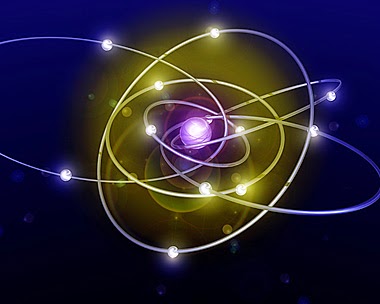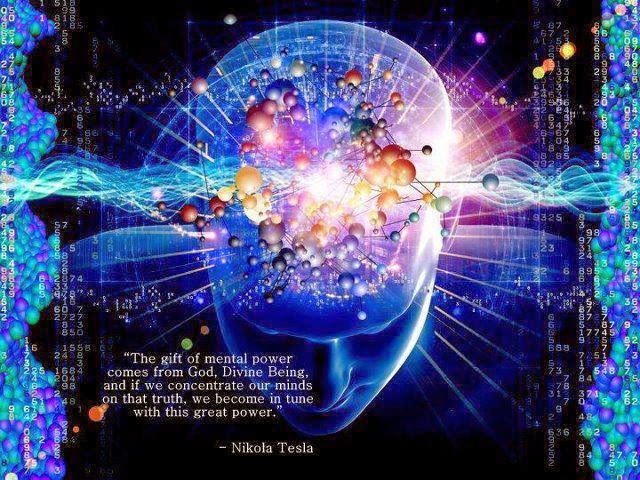| Online: | |
| Visits: | |
| Stories: |

| Story Views | |
| Now: | |
| Last Hour: | |
| Last 24 Hours: | |
| Total: | |
Quantum Mechanics, also Quantum Physics, or Quantum Theory – PT1
Sunday, May 18, 2014 23:37
% of readers think this story is Fact. Add your two cents.
Quantum mechanics (QM — also known as quantum physics, or quantum theory) is a branch of physics which deals with physical phenomena at nanoscopic scales where the action is on the order of the Planck constant. It departs from classical mechanics primarily at the quantum realm of atomic and subatomic length scales. Quantum mechanics provides a mathematical description of much of the dual particle-like and wave-like behavior and interactions of energy and matter. Quantum mechanics provides a substantially useful framework for many features of the modern periodic table of elements including the behavior of atoms during chemical bonding and has played a significant role in the development of many modern technologies.
In advanced topics of quantum mechanics, some of these behaviors are macroscopic (see macroscopic quantum phenomena) and emerge at only extreme (i.e., very low or very high) energies or temperatures (such as in the use of superconducting magnets). For example, the angular momentum of an electron bound to an atom or molecule is quantized. In contrast, the angular momentum of an unbound electron is not quantized. In the context of quantum mechanics, the wave–particle duality of energy and matter and the uncertainty principle provide a unified view of the behavior of photons, electrons, and other atomic-scale objects.
The mathematical formulations of quantum mechanics are abstract. A mathematical function, the wavefunction, provides information about the probability amplitude of position, momentum, and other physical properties of a particle. Mathematical manipulations of the wavefunction usually involve bra–ket notation which requires an understanding of complex numbers and linear functionals. The wavefunction formulation treats the particle as a quantum harmonic oscillator, and the mathematics is akin to that describing acoustic resonance. Many of the results of quantum mechanics are not easily visualized in terms of classical mechanics. For instance, in a quantum mechanical model the lowest energy state of a system, the ground state, is non-zero as opposed to a more “traditional” ground state with zero kinetic energy (all particles at rest). Instead of a traditional static, unchanging zero energy state, quantum mechanics allows for far more dynamic, chaotic possibilities, according to John Wheeler.
The earliest versions of quantum mechanics were formulated in the first decade of the 20th century. About this time, the atomic theory and the corpuscular theory of light (as updated by Einstein) first came to be widely accepted as scientific fact; these latter theories can be viewed as quantum theories of matter and electromagnetic radiation, respectively. Early quantum theory was significantly reformulated in the mid-1920s by Werner Heisenberg, Max Born and Pascual Jordan, (matrix mechanics); Louis de Broglie and Erwin Schrödinger (wave mechanics); and Wolfgang Pauli and Satyendra Nath Bose (statistics of subatomic particles). Moreover, the Copenhagen interpretation of Niels Bohr became widely accepted. By 1930, quantum mechanics had been further unified and formalized by the work of David Hilbert, Paul Dirac and John von Neumann with a greater emphasis placed on measurement in quantum mechanics, the statistical nature of our knowledge of reality, and philosophical speculation about the role of the observer. Quantum mechanics has since permeated throughout many aspects of 20th-century physics and other disciplines including quantum chemistry, quantum electronics, quantum optics, and quantum information science. Much 19th-century physics has been re-evaluated as the “classical limit” of quantum mechanics and its more advanced developments in terms of quantum field theory, string theory, and speculative quantum gravity theories.
The name quantum mechanics derives from the observation that some physical quantities can change only in discrete amounts (Latin quanta), and not in a continuousway.
Friend me on Facebook - Facebook
Follow me on Twitter - Twitter
Subscribe on YT - Subscribe
“The Gift of Mental power comes from God, Divine Being.If we Concentrate our minds on that truth, we become in tune with this great power” – Nikola Tesla
Source: http://stargazernation.blogspot.com/2014/05/quantum-mechanics-also-quantum-physics.html





